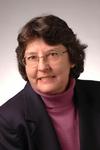Carol Fowler, Ph.D.
Affiliations
Senior Scientist , Haskins Laboratories
Director, Board of Directors, Haskins Laboratories
Professor, University of Connecticut
Adjunct Professor, Yale University
Former President and Director of Research, Haskins Laboratories, 1992-2008
Education
A.B., Psychology of Language, Brown University, 1971
M.A., Psychology, University of Connecticut, 1973
Ph.D., Psychology, University of Connecticut, 1977
Research Interest
I have a long-standing interest in the relation of speech production to perception, and I am using several means to study that relation. One is to explore how listeners extract (“parse”) phonetic information from acoustic speech signals. Speakers temporally overlap (“coarticulate”) vocal tract gestures for the successive consonants and vowels of words. This creates an acoustic speech signal that provides highly context-sensitive information for consonants and vowels. Evidence is clear in showing that listeners parse signals along phonetic gestural lines, recovering discrete phonetic gestures from context-sensitive acoustic signals. A second approach is to explore variation in coarticulation resistance in speech production and to relate that variation to variation in perceptual parsing. The more resistant a phone is to coarticulatory overlap by a neighbor, the less acoustic evidence it provides for the neighbor. Perceptual studies suggest that listeners use such evidence, roughly to the extent it is present, as information for the neighbor. Third, I am making use of the finding that speakers imitate the speech they hear as a tool to explore the nature of the information they extract from the speech of others. Finally, I am using fMRI to look for evidence of a mirror neuron system in humans that is at work during speech perception. Mirror neurons are neurons found in the homologue of Broca’s area in monkeys that respond both when the monkey performs an action and when it sees the same action performed by someone else. Evidence that such a system is at work during speech perception and production by humans would support some claims of the motor theory of speech perception, specifically the claims that listeners perceive speech gestures and that there is motor system involvement in the perceptual process.
In other research, I am making use of imitation to look at the role of talk in between-person interactions. We have found that, when speakers engage in a cooperative task requiring them to talk to one another, they entrain in their postural sway. This occurs whether or not they can see one another. We are pursuing this finding to explore how, in Herbert Clark’s terms, language can serve as a “coordination device” between people.
Representative Publications
Viswanathan, N., Fowler, C. A. & Magnuson, J. (2009). A critical examination of the spectral contrast account of compensation for coarticulation. Psychonomic Bulletin & Review, 16, 74-79. (PDF)
Viswanathan, N., Magnuson, J. & Fowler, C. A. (in press). Compensation for coarticulation: Disentangling auditory and gestural theories of perception of coarticulatory effects in speech. Journal of Experimental Psychology: Human Perception and Performance.
Olmstead, A. J., Viswanathan, N., Aicher, K. A. & Fowler, C. A. (2009). Sentence comprehension affects the dynamics of bimanual coordination: Implications for embodied cognition. The Quarterly Journal of Experimental Psychology, 62, 2409-2417.
Fowler, C. A. (2010). The reality of phonological forms: A reply to Port. Language Sciences, 32, 56-59.
Fowler, C.A. & Thompson, J.M. (2010). Listeners’ perception of “compensatory shortening.” Attention, Perception & Psychophysics, 72, 481-491.
